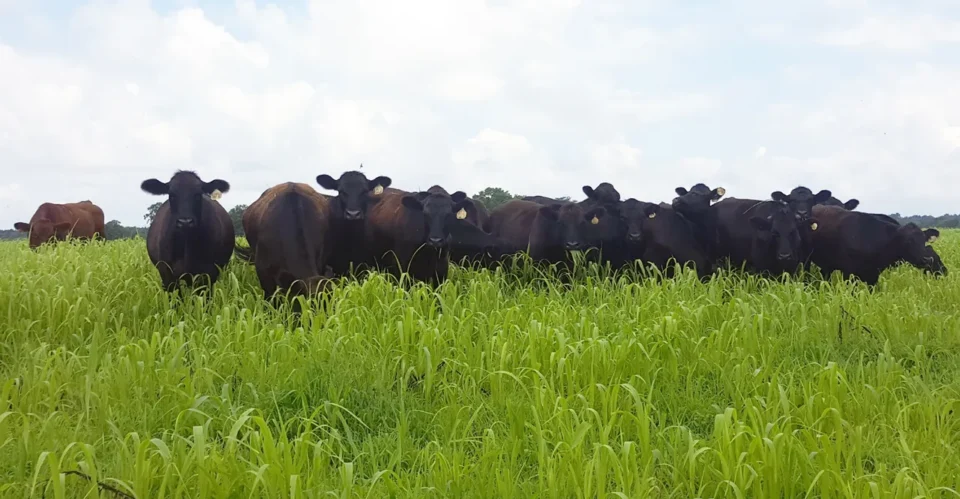Research explores sustainable way to boost forage yield and soil health in Idaho’s short growing season.
An innovative University of Idaho Extension study is offering new hope for farmers and ranchers looking to make the most of limited growing seasons by raising two forage crops from a single field.
Now in its second year at the Nancy M. Cummings Research, Extension and Education Center in Salmon, the project—led by Extension beef specialist John Hall—demonstrates that cover crops can successfully follow hay harvest and be grazed by cattle before winter.
The dual-crop system begins with fall triticale, harvested as hay in June. After baling, the field is treated to prevent regrowth, then planted with a multi-species cover crop mix. Unlike typical cover crops grown solely for soil health benefits such as nitrogen fixation and improved porosity, Hall’s team opted to graze the crops, thereby capturing additional value while enhancing soil fertility through manure deposition.
“Our main objective was to prove we could use cover crops in this area, graze with cattle, and achieve good weight gains,” Hall explained.
Two Crops, One Field
During the 2025 field day on September 9, Hall’s team showcased their success. Despite Salmon’s notoriously short season, the cover crops produced enough forage to graze 30 yearling heifers across a 29-acre field divided into 15 paddocks. Livestock were rotated every two days using a management-intensive grazing system, which promoted even forage use and nutrient distribution while reducing soil compaction.
The results are promising. Hall’s team achieved 60 to 70 days of grazing before needing to replant triticale, proving the viability of double cropping in a region once thought too cold for such intensive rotations.
Improving Soil Health and Reducing Emissions
The study is part of a larger sustainability effort. Researchers are evaluating soil carbon levels and greenhouse gas emissions, exploring whether higher-quality forage reduces methane output from cattle.
Dr. Gwinyai Chibisa from the Department of Animal, Veterinary and Food Sciences is tracking livestock emissions, while soil scientists measure changes in carbon accumulation and soil respiration rates.
Although some initial challenges emerged—such as prussic acid toxicity from early frost in certain grass species—the current crop mix of peas, radishes, turnips, millet, oats, barley, and rye has been fine-tuned to ensure safety and performance.
Toward Climate-Smart Ranching
The first two years of research were funded by the U.S. Department of Agriculture’s Partnerships for Climate-Smart Commodities Program (award #NR2333A750004G038). The team is now seeking additional funding to continue for up to three more years.
Researchers hope this work will inspire more producers to integrate grazing cover crops into crop rotations, improving soil health, reducing input costs, and building resilience against Idaho’s harsh climate.
“We’ve shown it’s possible to raise and graze cover crops in a short season,” Hall said. “The next step is to quantify the economic and environmental benefits for producers.”



